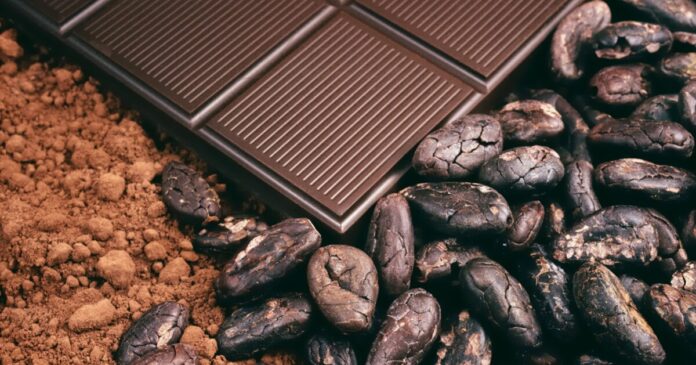Why do some chocolate bars exhibit complex flavor notes like floral, caramel, and gentle woody, while others taste harsh, bitter, and astringent? A study published in Nature Microbiology has for the first time homed in on the specific combination of temperature, acidity, and microbes involved in the optimal fermentation process for cocoa beans. They then proposed an ideal microbial formulation for developing the flavors of fine chocolate.
“Fermentation is a natural, microbe-driven process that typically takes place directly on cocoa farms,” says the first author of the study, David Gopaulchan, of the University of Nottingham.
Chocolate’s distinctive taste begins with cocoa beans, harvested from trees and fermented right on the cocoa farm to develop their aroma and reduce bitterness. The beans are typically piled in wooden boxes or baskets, in which bacteria and fungi break down the beans’ pulpy coating, producing chemicals that generate flavor precursors within the beans.
However, unlike beer or cheese, where microbes are intentionally introduced and controlled, fermentation in cocoa beans is a spontaneous process and largely uncontrolled. Farmers have very little influence over which microbes take hold, resulting in flavor variations between batches and regions.
To figure out what specifically drives great chocolate flavor, David Gopaulchan and his colleagues monitored fermentations on three Colombian cocoa farms. The team analyzed genetic material to identify the bacteria and fungi present in the samples. These are the microbes that convert sugar into alcohol or acid contributing to the final taste. Building on this, the researchers recreated this process in the lab. They assembled nine key microbes: five bacteria and four fungi.
The team then harvested fresh cocoa beans and sterilized them to ensure that no other microbes were present. After fermenting the beans with a mix of those microbes, the beans were dried and ground to produce cocoa liquors.
A trained tasting panel confirmed that liquor produced from beans fermented with this specific batch of microbes exhibited notes of fruit and flower, like fine chocolates. Meanwhile, beans fermented with different microbes lacked those same characteristic flavor notes.
“Our findings provide a foundation for manipulating flavor profiles of cocoa beans,” says Gopaulchan.
By using a controlled batch of microbial communities, researchers successfully produced chocolates with fine flavors, signaling a shift from uncontrolled fermentations to a standardized, science-driven process, and allowing chocolate producers to consistently produce quality chocolates.
This study has been published in the journal Nature Microbiology.
Source: University of Nottingham


